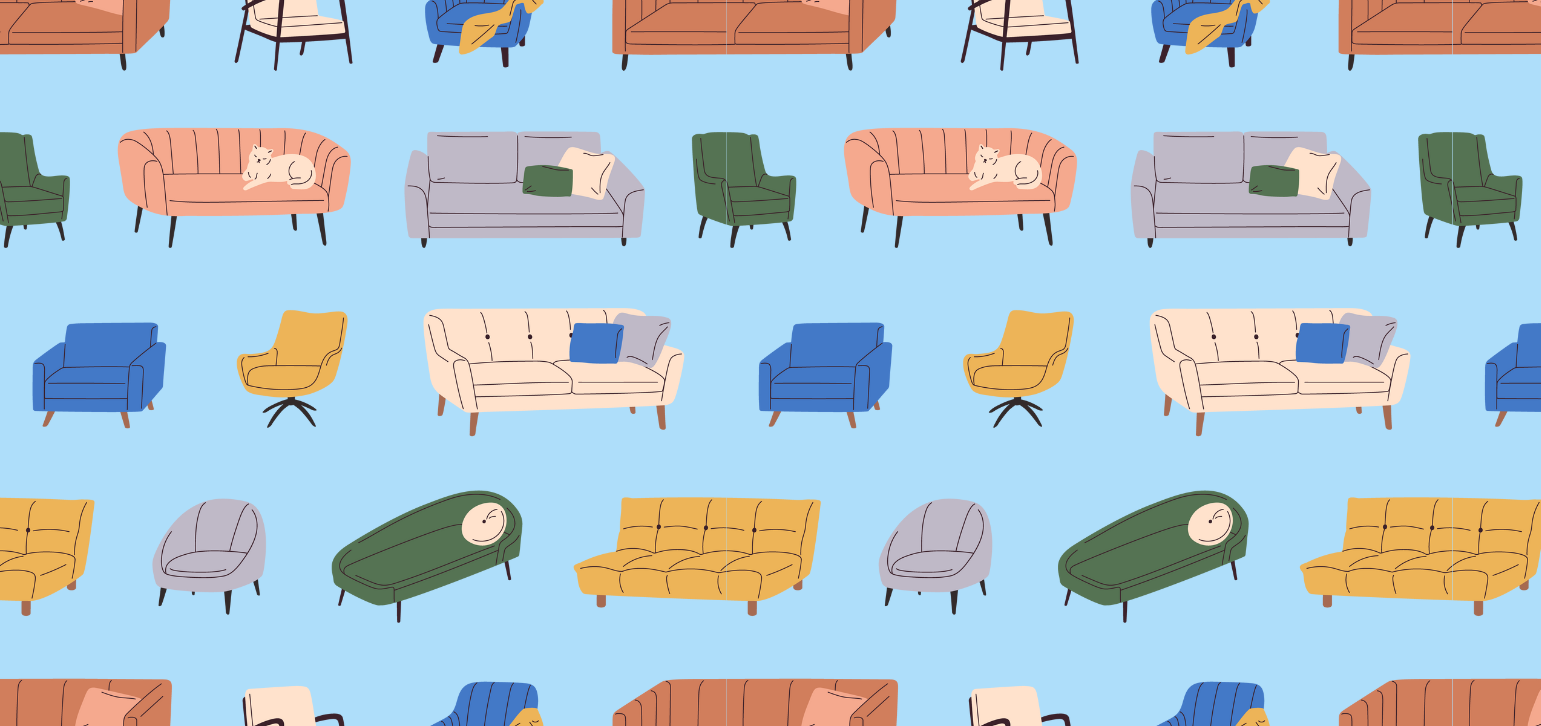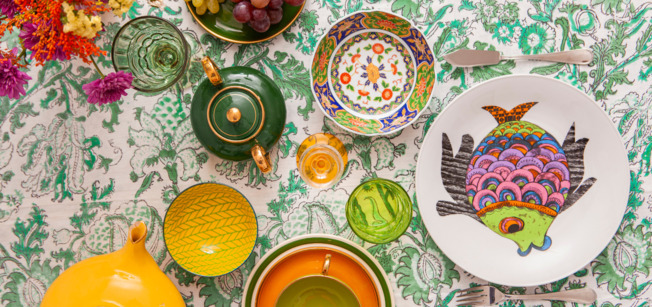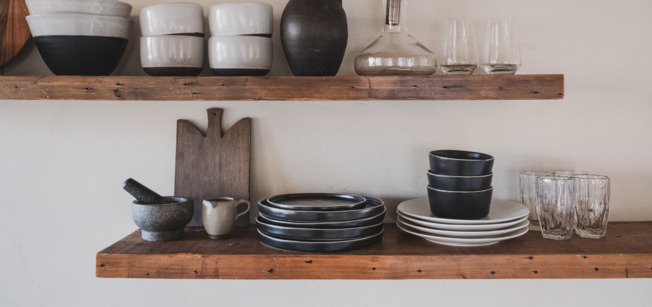
Picking a New Couch? Here are Pros and Cons of Common Sofa Upholstery Fabrics
Apr 30, 2024
Buying a couch is a big investment, so it’s important to do thorough research on what will work best for you before you click “add to cart.” Of course, you’ll want to think about size and shape, starting with measuring your apartment’s living room and getting an understanding of your square footage. Choosing the right fabric for your new sofa, however, can be a bit trickier.
There are countless upholstery options for couches — but while the easiest way to figure out what you like is by going in person to a store and testing things out, not every person has that option. If the store you are ordering a couch from doesn’t have an option to order a swatch in advance or a brick-and-mortar location, check out the below guide to help weigh your sofa fabric options.
Leather
Functionality meets fashion with leather couches. They are highly sought after because of their sophisticated appearance and easy cleaning regimen (you can simply wipe them down after a spill). Leather sofas also wear beautifully, getting softer and softer with every use, much like your favorite leather jacket, and developing a thin layer called a patina that signifies a high-quality product. Leather is also a durable material that is a great option for those with sensitive skin or allergies due to its non-fibrous quality.
The cons of leather upholstery will likely come down to cost or texture. Leather is one of the most expensive natural materials you can find for a couch, especially if it’s authentic. (It’s easy to get real or authentic and genuine leather mixed up, but the former is made from 100% animal hides while the latter only uses a small percentage of authentic leather.) If you’re the type to carry out an aesthetic overhaul every few years, a leather couch will be very expensive to reupholster or replace — so it may not be the best idea to invest in one if you feel fickle about your style. Plus, in the winter, leather couches can feel cold compared to a softer, fibrous couch like velvet or linen.
A cheaper alternative to an authentic leather couch with the same benefits: genuine or faux leather.
Velvet
Velvet is a gorgeous choice for couch fabric that’s both timeless and versatile. It suits many different interior design styles from midcentury modern to Victorian chic, and it takes color well, meaning it’s a great fabric if you want to play around with jewel tones and incorporate a statement piece of furniture. Velvet is also very soft and comfortable, and its shininess can add dimension and drama to a room that’s lacking interest and texture variety. Plus, it does not have loose threads or raised weaves, so your velvet sectional won’t snag or pill easily.
However, velvet tends to be expensive compared to other fabrics, and is very susceptible to eye-catching, stubborn stains. It also clings on to dust, crumbs, pet hair, allergens — and just about anything else that gets into its path — making it an overall high-maintenance pick. Be prepared to vacuum your velvet couch regularly, tend to spills quickly with absorbent cloths, and brush the velvet back into shape. But if you do your research on the specifics of the velvet you’re considering, you can find high-performance polyester blends that resist some of those complications.
A more affordable alternative to velvet: chenille.
Cotton
Cotton is a classic fabric that, like velvet, is great for adding color to your living room but is also a great option if you’re looking to incorporate a pattern like cabana stripes or subtle florals. It’s extremely durable and robust, fade-resistant in direct sunlight, breathable for year-round comfort, resistant to abrasion, and cost-efficient.
The only drawback of a cotton couch is that its susceptibility to stains, wrinkles, and pilling make it a slightly high maintenance choice for upholstered furniture that sees high traffic. But if you have slip covers that come off, a simple ironing and spot cleaning will get the job done or you can throw them in the washing machine washer on a cold setting. Once they’re clean just steam them before re-covering your cushions to remove wrinkles.
A more stain-resistant alternative to a cotton: high quality performance fabrics.
Microfiber
Microfiber couches, comparable to suede in both look and feel, are lauded as some of the most pet-friendly couches due to their tight weave pattern, which makes it difficult for claws to scratch and puncture the fabric. It’s also easy to clean, and many microfiber couches are water resistant, making them a popular choice for family rooms home to small children. Microfiber is a very low maintenance and durable type of fabric, and it’s versatile from an aesthetic standpoint.
One thing to note: While it’s one of the most durable fabrics on our list that will stand up against heavy use by pets and kids alike, your clingy and soft microfiber couch will attract their fur. A damp cloth will come in handy in this situation. Other drawbacks are that microfiber is not the most breathable fabric, and it is a synthetic material, meaning it lacks the perceived luxury that modern consumers associate with natural fibers.
Organic alternatives to microfiber: hemp or linen.
Linen
Linen couches are breezy and stylish, complementing warmer environments and coastal aesthetics — but they can also be a good match for four-season climates, making them versatile all around. Their durability holds up to everyday life without sacrificing style and luxury, and like velvet, their distinct texture can be a game changer for your interior design.
Linen is another natural fabric that’s on the more expensive side, and it wrinkles and stains easily just like a linen shirt or pants would — so it may not be the best fabric for a family with young children or excitable pets. Take care of linen upholstery materials like you would with an expensive article of linen clothing: Iron on high heat after misting with water, and spot clean using lukewarm water or baking soda paste for tougher stains.
A more durable alternative to linen: performance linen.
Top cities
Atlanta Apartments
1,862 apartments starting at $630/month
Austin Apartments
5,958 apartments starting at $600/month
Baltimore Apartments
1,479 apartments starting at $640/month
Boston Apartments
5,616 apartments starting at $425/month
Charlotte Apartments
3,065 apartments starting at $570/month
Chicago Apartments
5,466 apartments starting at $400/month
Dallas Apartments
5,502 apartments starting at $625/month
Fort Worth Apartments
2,696 apartments starting at $695/month
Houston Apartments
5,832 apartments starting at $450/month
Las Vegas Apartments
1,017 apartments starting at $795/month
Los Angeles Apartments
12,826 apartments starting at $750/month
Miami Apartments
710 apartments starting at $1,200/month
Milwaukee Apartments
1,104 apartments starting at $475/month
New York Apartments
8,971 apartments starting at $600/month
Oakland Apartments
942 apartments starting at $850/month
Orlando Apartments
859 apartments starting at $895/month
Philadelphia Apartments
3,602 apartments starting at $500/month
Phoenix Apartments
3,548 apartments starting at $592/month
Pittsburgh Apartments
1,388 apartments starting at $590/month
Portland Apartments
2,267 apartments starting at $575/month
Raleigh Apartments
1,480 apartments starting at $550/month
San Antonio Apartments
3,392 apartments starting at $525/month
San Diego Apartments
2,844 apartments starting at $650/month
San Francisco Apartments
666 apartments starting at $500/month
San Jose Apartments
503 apartments starting at $1,000/month
Seattle Apartments
3,528 apartments starting at $452/month
Tampa Apartments
776 apartments starting at $850/month
Washington DC Apartments
2,295 apartments starting at $910/month


